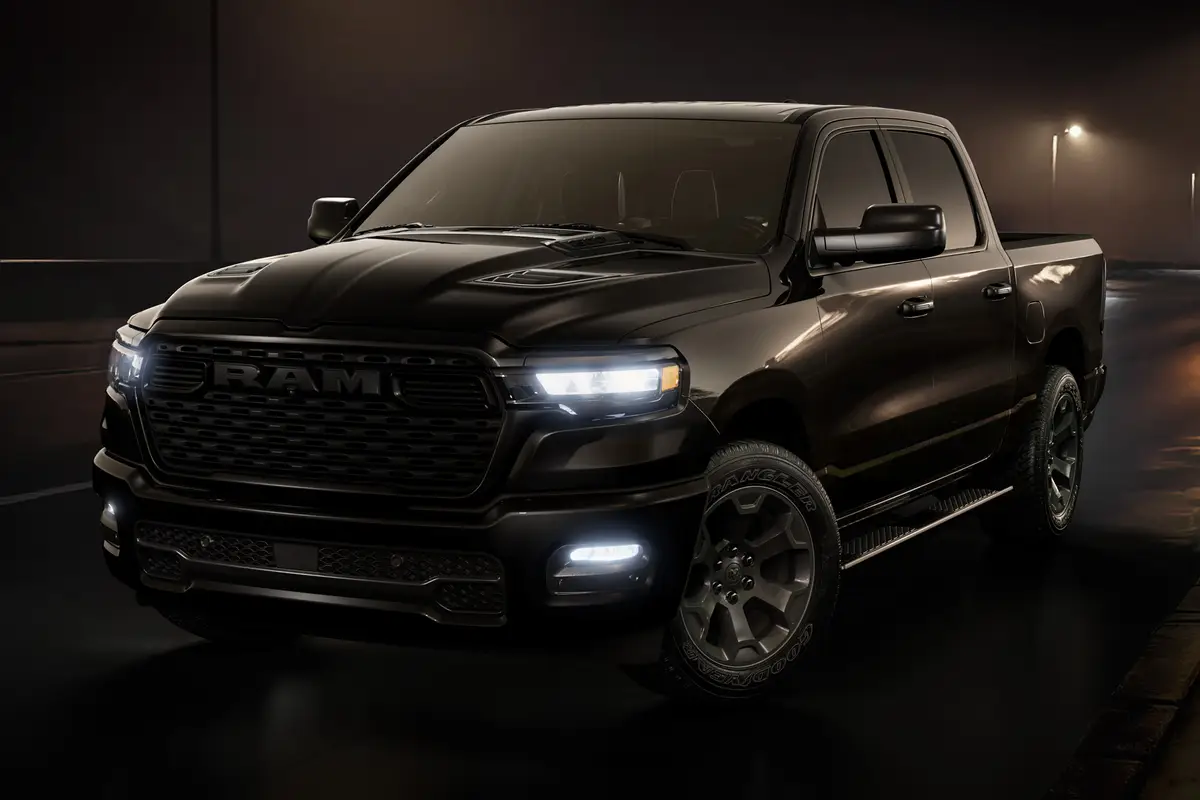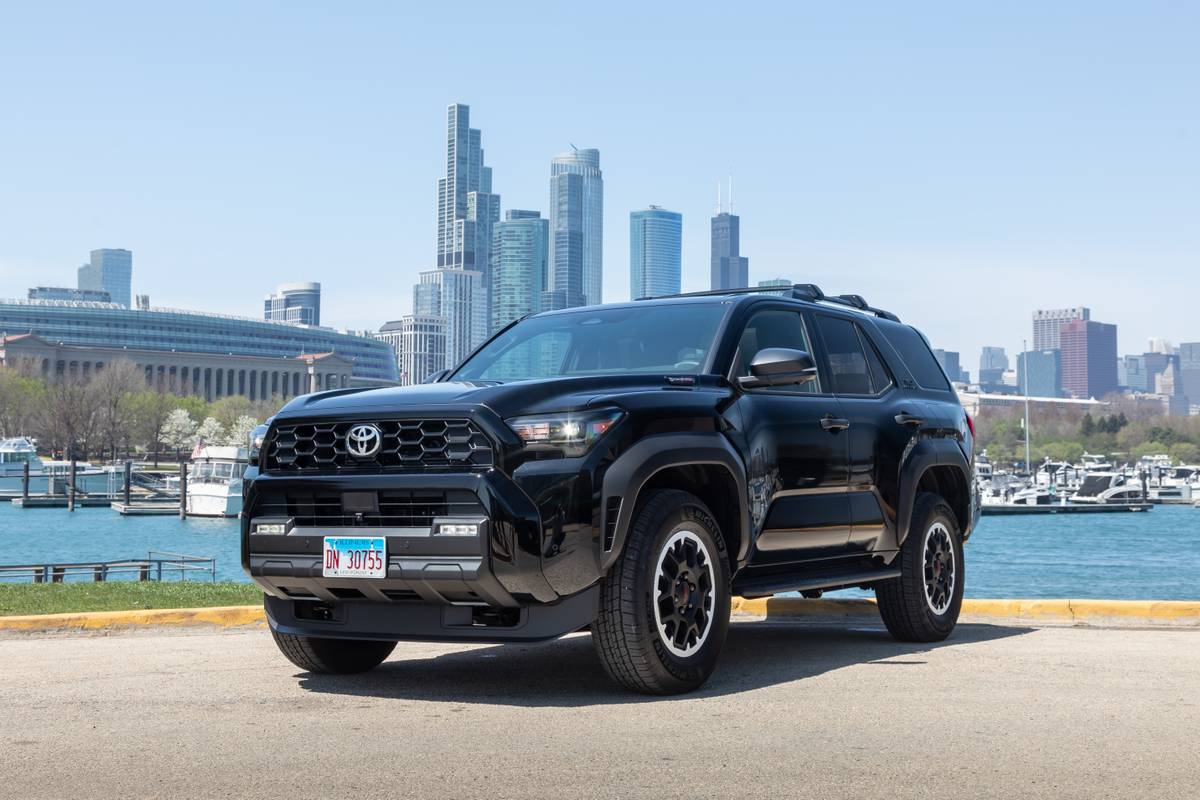Cincinnati.com's view
Good thing this piece is running close to April 1, for the subject is a bit of a joke.
Not that I didn’t have a blast researching it; after a long line of quiet, sophisticated vehicles, I was ready for the more elemental pleasures of the Hummer H1, the civilianized version of the famed High Mobility Multi-purpose Wheeled Vehicle (HMMWV, pronounced Humvee), so familiar from newsreels.
It is, as its makers at AM General say, “An experience like nothing else.” (AM General – cousin to Willys, the antecedent of Jeep) got its first military contract for the HMMWV in 1983, and has since delivered more than 150,000 to U.S. and friendly forces.
The civilian Hummer was introduced in 1992, and recently, General Motors bought the name and marketing rights, renamed the brute the Hummer H1 and announced plans for a slightly tidier, more civilized version, the Hummer H2, which is to debut later this year. Think squashed Land Rover. It will be built by AM General at a new plant in the same Mishawaka, Ind. town as the H1.)
GM says the H1 is “rugged enough for Baja, refined enough for the country club.” The first half of that assertion is unassailable; the second half, to put it kindly, a black lie. If you want to get your tail blackballed out of the club, go ahead and ease this noisy, stinky sociopath into a space and a half between a couple of Benzes. Once is a good laugh; twice, and they call a special meeting of the membership committee.
As an off-road machine for civilians, it would be indomitable, provided that you operate it only in relatively open terrain – Baja would do nicely. It’s far too big for the typical trails Jeepers pursue, and there will inevitably be SOME trees it just can’t flatten.
But the specs are awesome. The H1 has 16 inches of ground clearance, about twice that of the typical large SUV. It can ford in water 30 inches deep, thanks to that air intake situated atop the hood. It can negotiate a 60 percent grade (that’s 31 degrees for the trigonometrically amnesiac) and stay upright on a 40 percent (22 degree) side slope, thanks to its wide track – seven feet between the tires on each axle, which is about the total width of a Grand Cherokee. With that stretched track – about a foot more than the norm – it’s also pretty stable in cornering maneuvers.
Its angle of approach (the steepest grade it can tackle without first burying the front bumper) is 72 degrees without winch, and departure angle is 37.5, thanks to its short-coupled design.
The one I had came with the 12,000-pound winch, which is scary enough to a city boy – if you get in so deep with a machine like this that you need a winch to tug you out, it might be just as well to call for an airlift.
Let’s climb up – waaay up – and take a ride. Unlock the beast with the ordinary-enough keyless-remote key fob. The door, for all its armor-plated look, is light – made of aluminum – and swings open easily and closes with a somewhat tinny s ound.
Once you haul into the driver’s seat, you see right away this is a machine for fighters, not lovers. Your companion or co-pilot is four feet away across a gigantic central hump, which also extends into the second-class seating area. The engine and transmission and transfer case live beneath a vast mound of plastic. So intrusive is it that the rear passengers are cramped and the cargo volume (58 cubic feet) is about what you’d get in a mini-ute with its rear seats folded.
The engine is a 6.5-liter turbodiesel V-8, made by AM General. You turn the key to On, and then wait, as instructed by a bright readout amid the instruments, for the glowplugs inside the cylinders to warm things up enough to allow compression ignition to take place. Engage the starter motor and, if you’re not used to diesels of the old school, you’re in for an alarming surprise. GM, as well as Ford and Chrysler, make fairly civilized diesels; this baby’s a brute. But it fits the character of the H1. All part of the dig-me thing, ya know?
Wait a few more seconds for the horrible uncoordinated cacophony to ease ever so slightly, and you’re ready to proceed.
The transmission is a four-speed automatic and the default operational mode is all-wheel-drive, although part-time four-wheel high and low are available at the tug of a transfer-case lever. You can’t run in two-wheel-drive, in case you had a fleeting thought of economizing, silly.
The 7,154 pounds of mass moves from the starting line rather deliberately. After all, there’s only 195 hp and 430 foot-pounds of torque to get it done. The torque peaks at 1,800, though it’s building long before then, and the game’s over right after the horsepower peaks at 3,400.
My chronograph ticked off 16 seconds before the speedo needle hit 60. School buses and garbage trucks do as well, although I did edge out one large diesel-powered FedEx truck which tried to make a game of it.
The only time cabin noise drops below very unpleasant is when you let off the throttle – something you seldom do even at steady-state cruise. The relative quiet then seems sepulchral until you realize your ear follicles have gone on strike.
Ride quality is surprisingly good, with tires properly adjusted. The manual offers an elaborate chart of recommended front and rear pressures for the whopping truck tires, which are 12.5 inches wide. Suggestions are made for highway cruising fully loaded/lightly loaded; for secondary roads, fully loaded/lightly loaded; off-road, ditto; and deep doo-doo, ditto.
What a pain that would be were it not for a feature I’d love to see on other vehicles : a central tire inflation system. On the dashboard is a gauge for inflation pressures, front and rear, and a switch to inflate/deflate the tires on the go, via an onboard compressor. Tr’s slique. They say you can even run the compressor continuously if you happen to take a bullet hole or other aperture of that size while playing Rambo. The tires themselves are mounted on special rims designed to keep them in place regardless.
I ventured to a nearby gravel pit on a wonderfully rainy day, bled off air to the “off-road” setting, and had a ball surmounting piles and holes with ease. The surface around the heaps of gravel was slimy mud, but locking the transfer case into four-wheel high made it seem like macadam. Traction control prevented wheelspin nicely even when I tried to create a spray by standing on the accelerator.
As a highway ride, the H1 is only marginal – unless you just live for the sound of necks snapping around as other drivers check it out and, in many cases, try to play tag with it, or you delight in giving valet parkers a thrill. (The H1 would probably be a cynosure even if the paint were oli ve drab, instead of the new “Firehouse Red” they saddled me with.)
Steering is (excessively) quick and light, and the turning radius, despite the extended wheelbase, is surprisingly tight. Still, with a body width of 7 feet, 2.5 inches, it’s dicey in parking lots. It would, however, fit nicely in a typical (double) home garage – at 184.5 inches overall length, it’s only four inches longer than a Grand Cherokee, considerably less than a big Caddy. Neither is it 8 feet tall, as might appear ‘ at 6-3, it’s not nearly so lofty as many full-size pickups and SUVs.
Fuel consumption is rated at 13 mpg city, 19 highway. I measured 14.1, on No. 2 diesel, which these days is priced like a mid-grade gasoline. The H1 has a (switch selectable) 25-gallon main tank and a 17-gallon reserve, just the ticket for traversing the Baja, with a pit stop midway.
Neither feds nor insurance industry has crashed an H1; it has no air bags, but would probably win any encounter with anything this side of a Freightliner.
AM General says the typical buyer of an H1 has five other household vehicles, and can shrug off the price: $108,969 with a hardtop, about 10 Gs less as an open-air machine.
In the tester, a winch added $2,688; mudder tires, $100, and special two-piece wheels, $1,368, for a total, with freight, of $113,990. They go at sticker, too, reports Edmunds.com.
Payments, if one had to stoop to that, would be $2,312, assuming 20 percent down, 48 coupons and 10 percent interest. If you have to ask about insurance costs . . .
“The Gannett News Service”
Latest news



